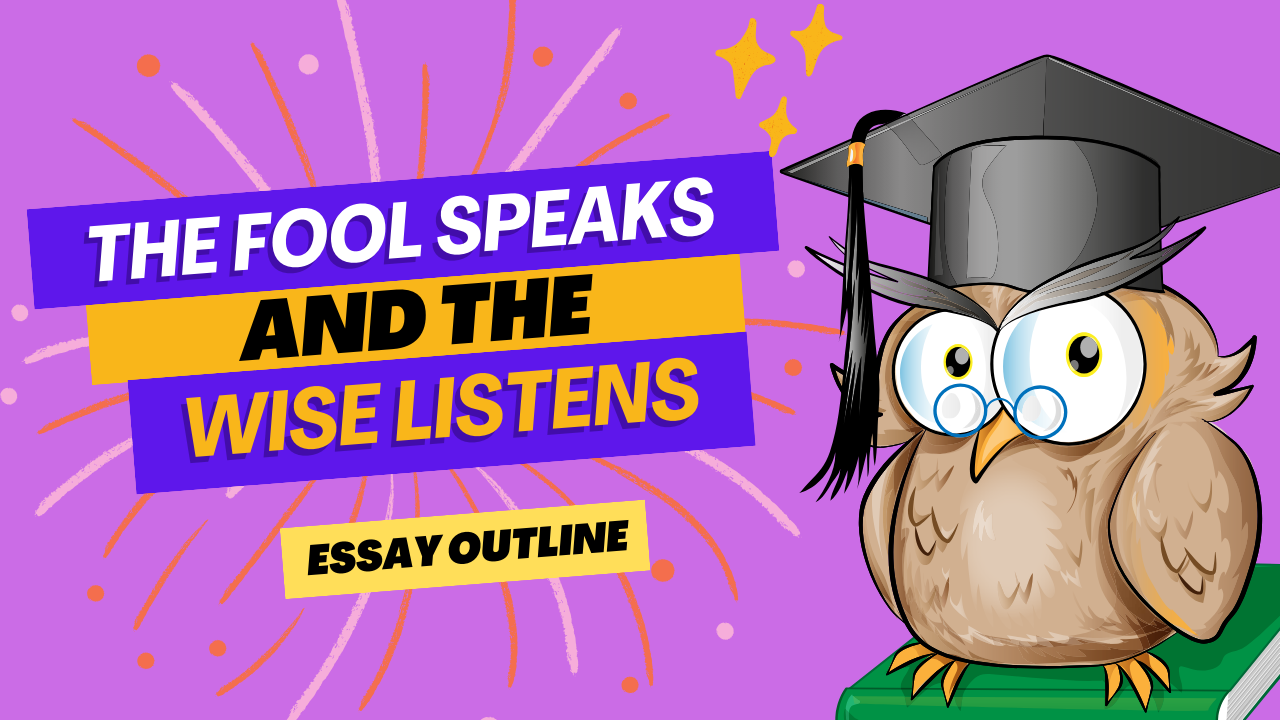THE FOOL SPEAKS, AND THE WISE LISTENS
I. Introduction
A. Explanation of the proverb “The fool speaks, and the wise listens”
Highlighting the importance of attentive listening in discerning wisdom from folly.
B. Importance of effective communication and active listening
In the parable of “The Boy Who Cried Wolf,” the villagers ignored the boy’s repeated false alarms, emphasizing the consequences of not listening attentively.
C. Thesis statement
Exploring the significance of attentive listening in discerning wisdom from folly in various contexts.
II. The Nature of a Fool’s Speech
A. Characteristics of foolish communication
1. Lack of depth or understanding
– Example: Politicians making sweeping statements without substantial evidence or knowledge.
2. Impulsiveness and inconsistency
– Example: Social media influencers hastily sharing misinformation without fact-checking.
3. Arrogance and ignorance
– Example: Individuals refusing to listen to opposing viewpoints due to their overconfidence in their own opinions.
B. Examples from history, literature, or contemporary events
– Historical figures like Caligula, known for erratic and foolish behavior.
– Literary characters like Shakespeare’s Malvolio from “Twelfth Night,” display arrogance and ignorance.
III. The Attributes of Wise Listening
A. Definition and components of wise listening
1. Patience and open-mindedness
– Example: Active listening during a heated debate to understand multiple perspectives before forming a conclusion.
2. Empathy and understanding
– Example: A therapist practising empathetic listening to comprehend a patient’s underlying concerns.
3. Critical analysis without judgment
– Example: Scientists listening to various hypotheses in a collaborative setting to discern the most viable one.
B. Examples showcasing the traits of wise listening
– Stories of leaders like Nelson Mandela, who actively listened to opponents to negotiate peace.
– Research studies emphasizing the impact of active listening in decision-making and learning.
IV. The Intersection: Wisdom in Action
A. How wise listening discerns wisdom from folly
1. Recognizing valuable insights within seemingly foolish speech
– Example: A creative breakthrough emerging from an initially dismissed idea in a brainstorming session.
2. Avoiding pitfalls by filtering out baseless or harmful information
– Example: Differentiating between constructive criticism and unsubstantiated negativity in a professional setting.
B. Case studies or anecdotes illustrating instances where wise listening led to discerning wisdom amidst foolish talk
– Personal experiences or stories highlighting the significance of listening for wisdom in conflict resolution or decision-making.
V. The Application of Wisdom in Society
A. Implications of applying the principle “The fool speaks, and the wise listens” in various contexts
1. Relationships and communication dynamics
– Example: Improved family relationships through attentive listening and understanding during conflicts.
2. Leadership and decision-making processes
– Example: Effective leaders fostering an environment of open communication and listening in their organizations.
3. Conflict resolution and fostering understanding
– Example: International diplomacy resolving disputes through patient and attentive negotiations.
B. Strategies for cultivating the habit of wise listening
– Active listening techniques and their effectiveness in different scenarios.
– Encouraging a culture of respectful dialogue and attentive listening in educational institutions and workplaces.
VI. Conclusion
A. Restate the importance of attentive listening in discerning wisdom
B. Emphasize the value of open-mindedness and critical analysis in communication
C. Final thoughts on the proverb’s relevance in contemporary society and the enduring wisdom it holds.

